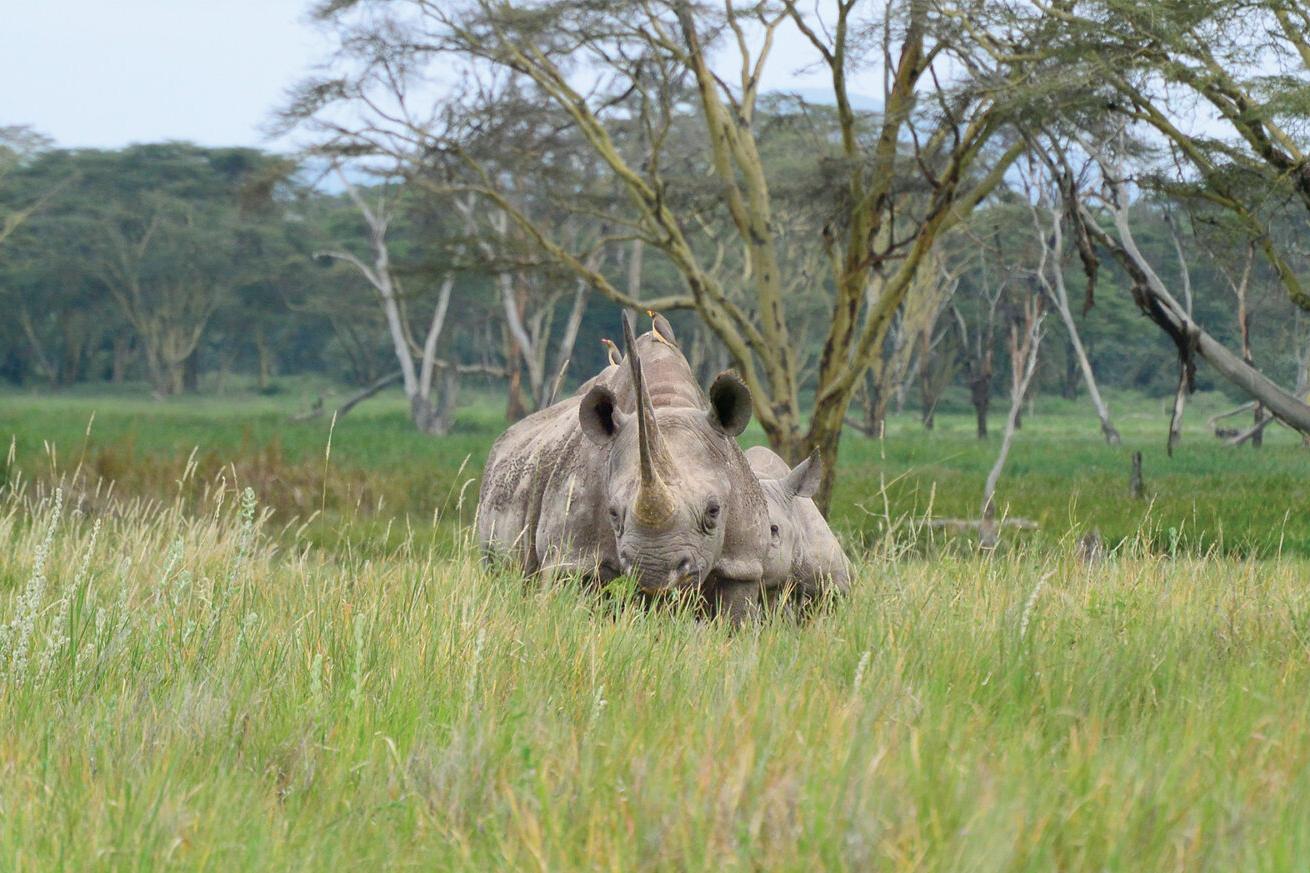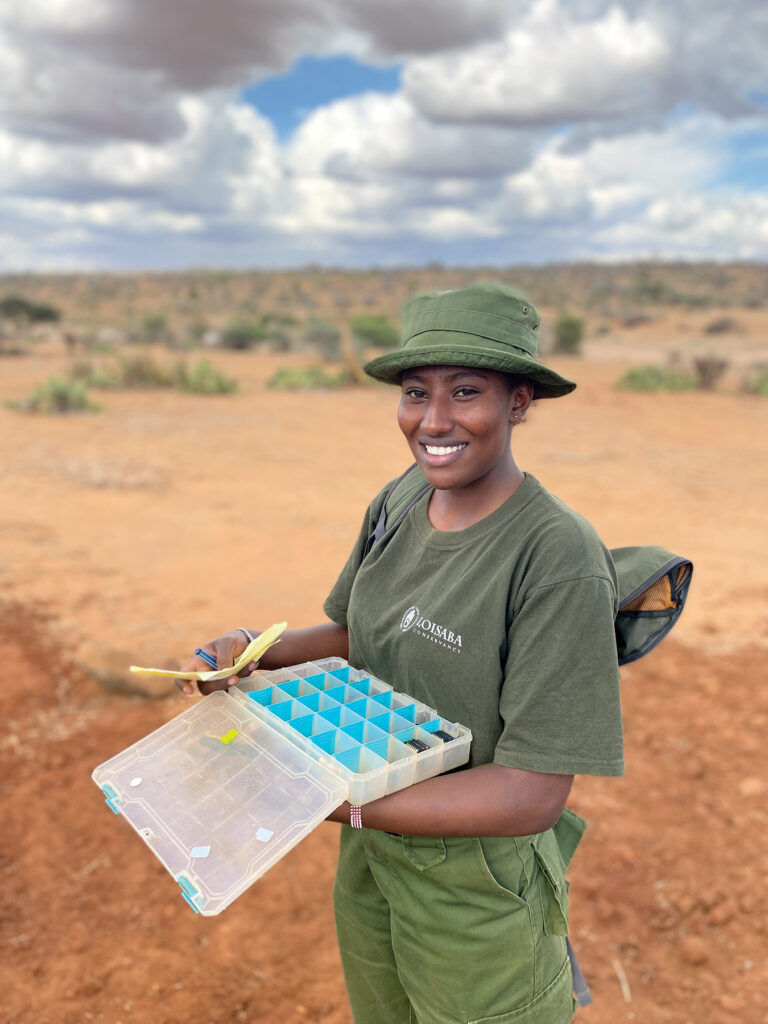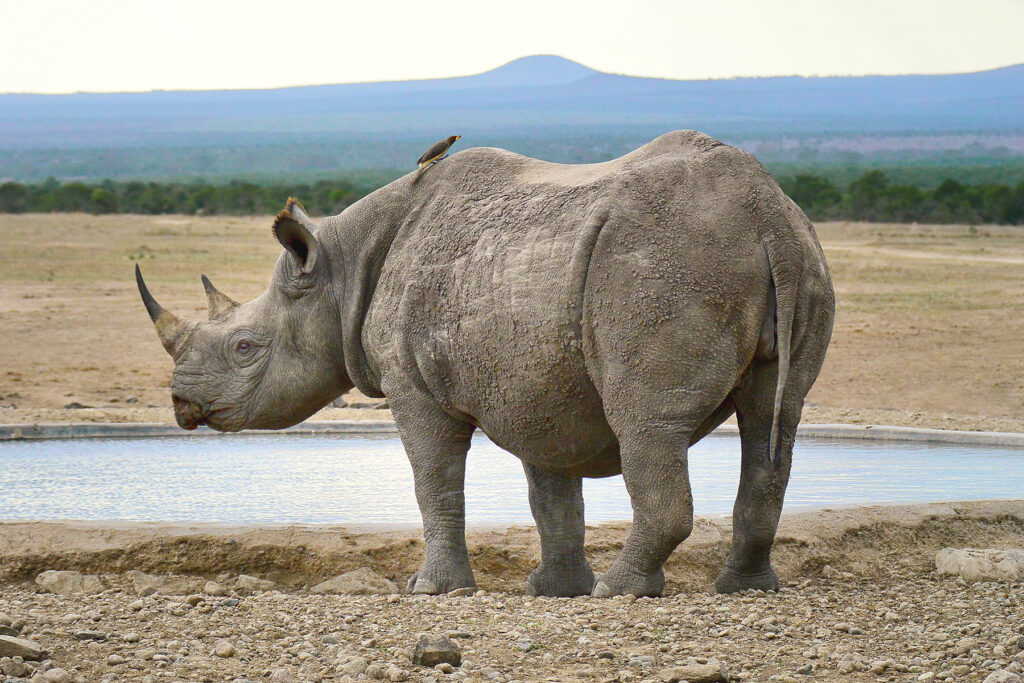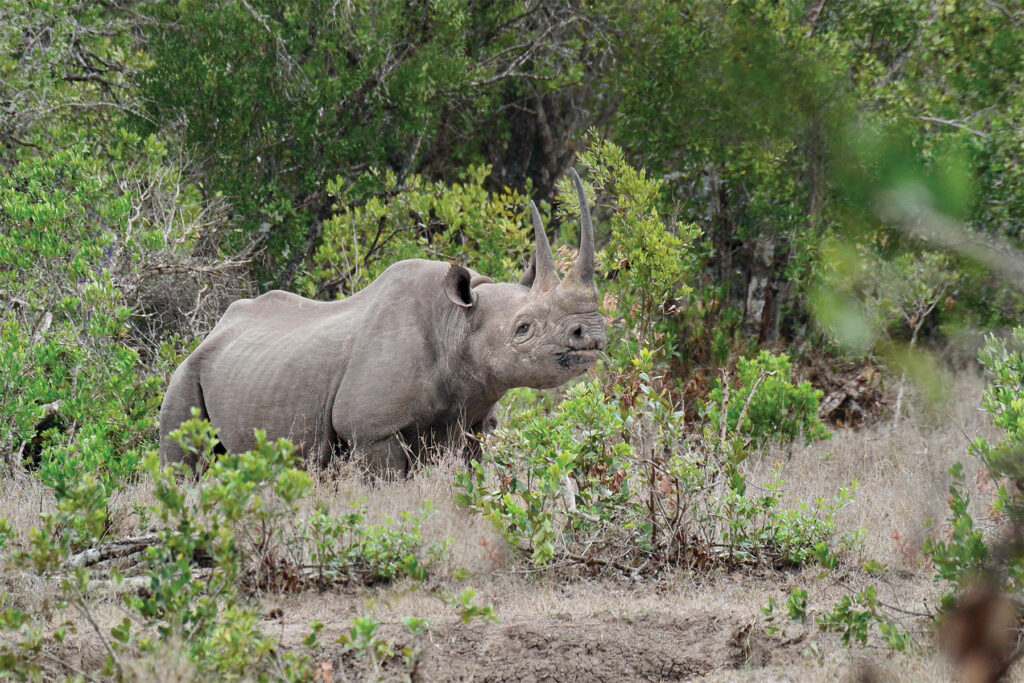
Bringing Black Rhinos Back to Loisaba
The planned translocation of 21 eastern black rhinoceroses Diceros bicornis michaeli to a new sanctuary in Kenya will be an exciting and crucial step for the continued recovery of this critically endangered species. However, the majestic animals that will live in Loisaba Conservancy won’t be able to simply walk over. Teaming up with Kenya Wildlife Service, Loisaba Conservancy, The Nature Conservancy, and Space for Giants, San Diego Zoo Wildlife Alliance is making considerable efforts to establish this sanctuary and return rhinos to this landscape. But why is this action needed? And, what will it mean for other wildlife, and for neighboring communities?
A Matter of Space—and Survival
This range expansion is needed to create space for the black rhino population to grow. We are excited to be a part of the effort to return rhinos to this landscape. But where did their once-sizable population go in the first place?
International demand for rhino horn led to formidable poaching in the 1970s and 1980s, crashing the black rhino population in Kenya—from more than 20,000 to fewer than 300 animals by 1987. The Kenyan government prioritized their conservation, and their numbers are growing again. At last count (in 2021), there were 897 individuals in 15 areas—all specially safeguarded from the looming threat of poachers. This is a success story, in and of itself. Yet now, black rhino numbers are reaching the carrying capacity of many of these spaces. Population growth rates have slowed, with juvenile survival and birth rates falling. It is clear that these megaherbivores need more room to establish territories for breeding, and to find plentiful leaves to browse from shrubs and trees.

San Diego Zoo Wildlife Alliance has stepped up to help create more space for black rhinos to roam and grow, supporting the Loisaba community in establishing an anti-poaching ranger unit and constructing a rhino sanctuary fence protecting 40 square miles of quality rhino habitat. Our work going forward is to collaborate with Loisaba’s new rhino-monitoring team to scientifically evaluate strategies to overcome risks inherent in this translocation, such as diseases, vegetation shifts, lack of community tolerance, and potentially negative rhino interactions with each other or with fencing.
Leading the Charge for Change
Rita Orahle, rhino conservation officer at Loisaba, will lead the rhino monitoring team. Though new to working with rhinos, she brings technical skills and conservation experience. Rita has expressed her excitement about helping with this species’ recovery, and says she already admires them for their mothers’ fearless protective behaviors over threatened calves. We are working closely with Rita to address risk from the rhino fencing.

In conservation, fences can be both helpful and unfavorable. They protect species threatened by poaching and help people coexist with wildlife, but they also prevent wildlife from moving to gain access to food, water, or mates. Mobility is especially important for migratory species and in environments like northern Kenya, where frequent droughts require wildlife to move long distances to find greener patches. To address this challenge, Loisaba Conservancy is constructing a low electric fence that allows many species to pass under or jump over it. The fence will feature corridor openings specifically designed to accommodate all wildlife except rhinos.

But how will other wildlife that share this landscape—including endangered wildlife like Grevy’s zebras Equus grevyi and reticulated giraffes Giraffa camelopardalis reticulata—interact with the fence and corridors? We anticipate that there may be collisions, and possibly even some fatalities. Rita’s work will help evaluate the effectiveness of the flagging that makes the fence more visible to wildlife. Wildlife here will learn where this new boundary exists, and where it is permeable.
Watching Closely
As the rhinos establish territories, find water sources, and create communal middens (dung heaps), where they communicate through scent, Rita and her team will document the rhinos’ behaviors, including interactions with one another and with other wildlife (which may not be used to seeing rhinos in their habitat). With our support, they will monitor the rhinos for diseases. Rita and our conservation scientists will also monitor the rhinos’ body condition, as well as vegetation changes—such as how plant species are shifting over time. We are excited to see this rhino population grow.

Connecting with the Past—and the Future
Black rhinos disappeared from Loisaba and the surrounding community areas 50 years ago. Some of the older people within the Laikipiak Maasai and Samburu pastoral communities remember seeing the last few individuals in the area. A few even remember the name of the last individual, Lotemere, who was named in honor of the elder responsible for guarding him. Among these Maa-speaking people, rhinos are called emuny, or in the national language of Swahili, kifaru. Many people in these communities supported the black rhinos’ return—including one clan, the Laiser, who see the rhinoceros as their representative, kindred animal.

Research guided by our social science team is evaluating community support, attitudes, and expectations around potential benefits and costs of the rhino translocation. Prior to the rhino translocation, 88 percent of community members agreed with the overall rhino conservation plan. Not only are most people excited at the prospect of seeing—or having their children see—black rhinos again, but they hope to gain benefits from added tourism, security, and jobs. However, people also worry that the new rhino sanctuary will limit where they can graze their livestock (the basis of their livelihood and culture), or that rhinos may attract poachers—criminals—to their community. We hope our conservation work, along with engagement from Rita and her rhino monitoring team and Loisaba’s community officers, will help address these and other community concerns. Community support is important for the long-term success of rhino conservation. For example, community members can help give early warnings when poachers are around or, one day, could even decide to extend rhino territory into conservation zones they manage.
Our collaborative science to understand fences, rhino behaviors, and people’s attitudes and tolerance may help identify best practices for establishing other rhino sanctuaries, or even—in the future—an interconnected network of protected areas for rhinos. Ideally, over time, rhino conservation will require less fencing and will have greater community support to ensure no poaching occurs. Internationally, we must find ways to end demand for rhino horn and safeguard the future of all rhino species. (We also work to address illegal wildlife trade in Southeast Asia.) We aspire to build a future where black rhinos can move freely across the Kenyan landscape. For now, our work continues to strengthen and spread rhinos’ ranges—one protected area at a time.
Discover how you're securing the future for critically endangered black rhinos through our Savanna Conservation Hub.




